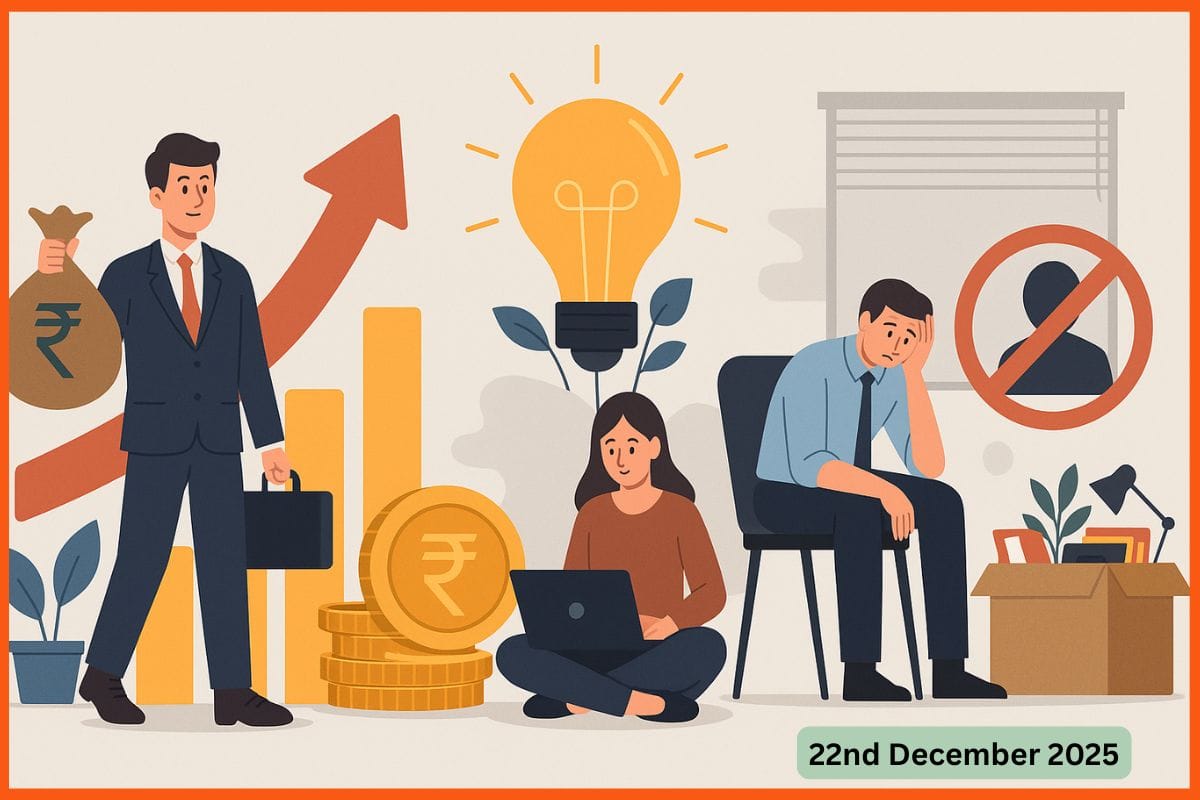Fintechs in 2024: Navigating Toward a Brighter Future
🔍Insights
2023 is a year that loan app companies and fintech companies may want to erase from their memory. Fraudulent loan app companies, extortion cases, and a rigorous crackdown by policymakers have meant that the whole cart is being painted black.
However, some loan app companies and fintech companies continue to pin their hopes on a better 2024 with consumer awareness programs, smarter risk-priced products, and collaborations to clean up the much-tarnished image of the sector.
Clean Business
Risk-based Pricing
End of a Tunnel
Clean Business
Digitization has hit nearly every aspect of life, and credit availability is not very far behind. A report released by banking regulator Reserve Bank of India showed that loans disbursed by banks and non-banking finance companies through the digital mode multiplied 12 times between 2017 and 2020. With the rise in several disbursements, the grim underbelly of several loan app companies has also been exposed.
Earlier this month, Finance Minister Nirmala Seetharaman intimated the Lok Sabha, saying that between April 2021 and July 2022, Google Play had reviewed up to 4000 loan app companies and had removed more than 2500 loan apps from its Play store. Several debtors have been driven to death by extortion calls and threats, some even being sent morphed pictures of theirs, highlighting the dark side of loan app recovery agents.
However, some of the more reputed companies are trying their best to clean off this image of loan app companies.
“We continuously explain to our end consumers through online as well as offline mediums to not fall into offers that look very attractive or that are available through WhatsApp, SMS, and SMS calls,” said Rajesh Shet, founder of gold loan platform company Sahi Bandhu.
The regulators, too, are putting in all efforts to curb unsolicited apps. Recently, the Ministry of Information and Technology has asked the Reserve Bank of India to have more exhaustive Know-Your-Digital-Finance-App norms.
"This will ensure that only legitimate and scrutinized financial apps can access and use the Indian banking system, and further, if there is any violation of law, the KYDFA process will help in establishing the traceability and origin of the app for action under the law," Minister for State for Electronics and Information Technology Rajeev Chandrasekhar told the news website Moneycontrol.com.
Risk-based Pricing
The issue of defaults within the loan app universe unravels a chicken-and-egg situation wherein companies are going overboard with selling products, thereby ending up sitting with bad loans on their books.
“Within the fintech industry, to increase the top line, some companies are trying to sell everything possible, even if customers are not looking for a loan or a credit card. They are trying to cross-sell and try to bring in lucrative deals or offers,” said Brijesh Chokhra, co-founder of the instant loan app company Wecredit.
Instant student loan app company Kuhoo Founder and Chief Executive Officer Prashant Bhonsle feels lending needs to be dealt with in a nuanced fashion to make it work for both the company and the customer.
“There are interpretations that a lender will have to do to fully understand, such as the income documents of the customer, the P&L, and the ITR. Some businesses you are evaluating are cash-flow businesses, and some are asset-heavy businesses. How do you interpret that information? And that interpretation is the secret sauce, which varies from lender to lender,” said Bhonsle.
Talking about Kuhoo’s focus area of student loans, the skill was to evaluate the potential of every student to get a job, Bhonsle said.
The regulators are, however, not taking any chances.
Recently, the RBI asked banks and non-banking finance companies to increase the risk weights on commercial loan exposure and credit card exposures to 125% from 100% earlier. Interestingly, several digital lending apps borrow from NBFCs too.
Rating agency ICRA recently observed in its press release that co-lending transactions by medium and small non-banking finance companies were “on the rise, largely seen in the unsecured loan segment, with the counterparty mostly being other NBFCs.”
Attributing to RBI data, Minister of State for Finance Bhagwat Karad said in the Lok Sabha earlier this month that NBFC’s share of credit to the industry was the highest at 12.83 lakh crore INR, registering a 12% rise year on year. This was followed by retail loans at 10.55 lakh crore INR, recording a near 26% rise on the year.
According to Bhonsle, appropriate “risk-based pricing” holds the key to a successful lending business.
End of a Tunnel
Given India’s sustained growth trajectory coupled with the promise held in artificial intelligence and machine learning, 2024 could hold promise for fintech companies.
“The Indian economy is growing rapidly, and with it, the demand for financial services. The coming years hold immense promise, and innovators across the world should explore these opportunities,” RBI’s Governor Shaktikanta Das said in a speech in September.
“Technological innovation has unprecedented potential to make finance more inclusive, competitive, and robust. It is crucial that technological advancements in the world of Fintech evolve in a responsible manner and are truly beneficial to the people at large. It is, therefore, vital for these innovations to be scalable and interoperable,” he added.
One of the ways to scale up operations for fintech companies would be through mergers, such as the one between the digital lending app Slice and North East Small Finance Bank in October. Touted as a breakthrough strategy to scale up, players are hoping for more such collaborations within the industry.
“I strongly believe that this industry will have to work closely and collaboratively, keeping common interests in mind. There will be competition, but there are common industry concerns and matters that require collaboration. And then, at some stage, there will not be enough room for many players. That's when one will have to join hands and see who is good at what. Someone may be very good in tech, and someone may be very good in customer onboarding,” said Shet of Sahibandhu.
India's growth prospects also hold promise as far as credit demand is concerned. Rating agency S&P revised its growth projection for India in 2023–24 to 6.4% from 6% earlier. For the next fiscal, however, it lowered its projection marginally to 6.4% from 6.9% earlier.
"India as an economy is doing so well, and this asset class (real estate) has shown returns year after year. I do see a lot of innovation on the FinTech side, particularly on the home loan side, because it seems like the norm of the regulators to allow the account aggregator framework to become more popular, which means that digital information will be a lot more freely available to many players who are part of the account aggregator framework," said Pramod Kathuria, founder and CEO of AI-enabled fintech platform for home loans, Easiloans.
Conclusion
Fintech companies and digital lenders are hoping for a more responsible and cheerful 2024. While technological innovations unlock their potential further, the only thing that could put a spanner in their tracks would be unscrupulous lending by themselves.

Must have tools for startups - Recommended by StartupTalky
- Convert Visitors into Leads- SeizeLead
- Website Builder SquareSpace
- Manage your business Smoothly Google Business Suite







